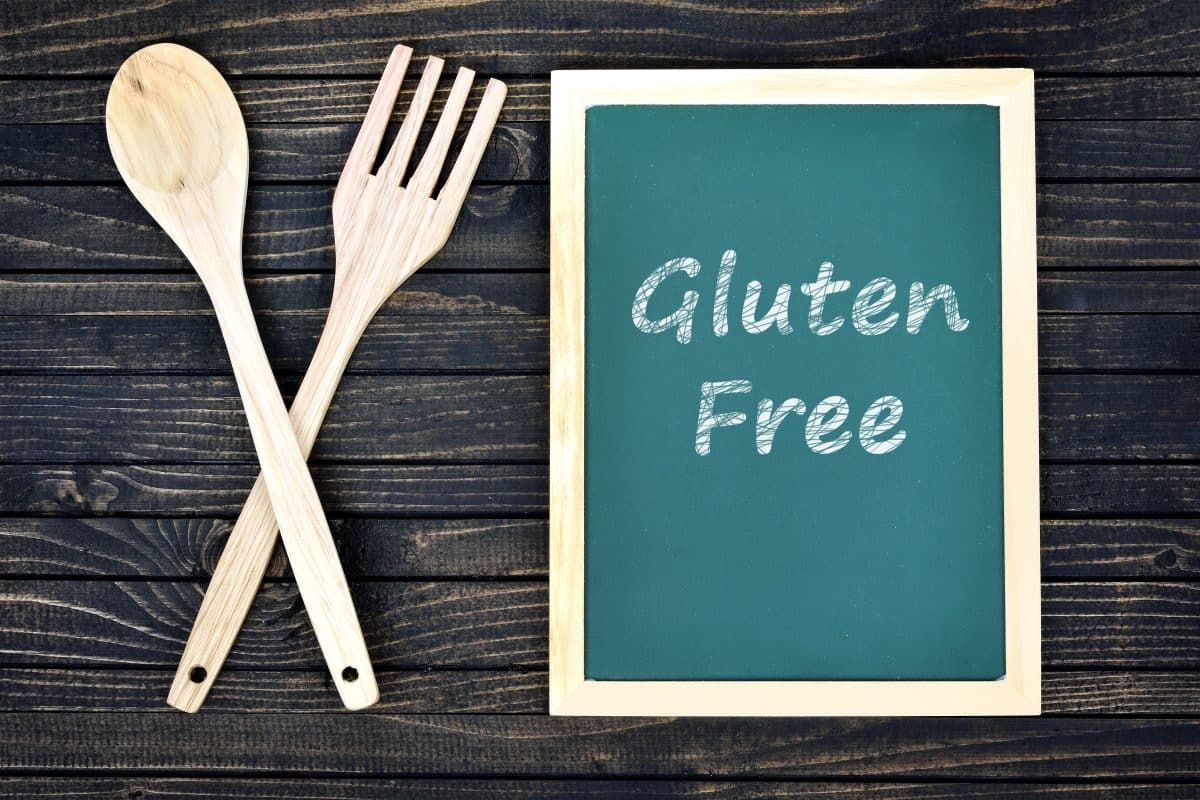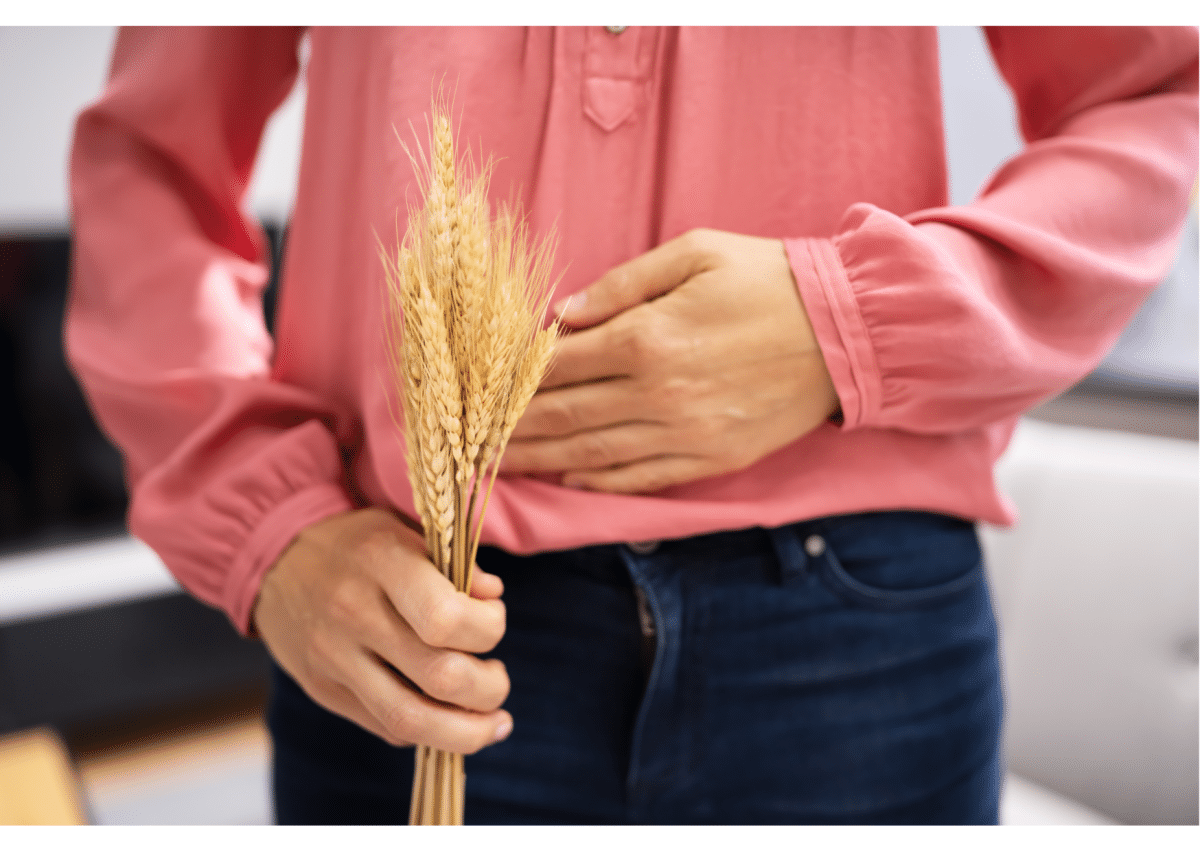Navigating a gluten free diet (a printable gluten free food list inside)
- Dietary Advice (non Low FODMAP)
If you have been diagnosed with celiac disease or a gluten allergy, you must follow a gluten free diet to avoid unwanted symptoms and gut damage.
It can be tricky starting out on a gluten free diet as gluten is a component of many staple foods, so you must be clear about what to look out for.
In this post, you can find a comprehensive printable gluten-free food list as an easy-access tool to help put your mind at ease when meal planning and writing shopping lists.

What is gluten?
Gluten is a protein found in wheat, barley, and rye. It consists of two main proteins: glutenin and gliadin.
When these proteins combine with water, they create a sticky and elastic network that gives dough its structure, allowing it to rise and become chewy when baked.
This unique property of gluten makes it a crucial component in many baked goods, such as bread, pasta, and pastries.
However, it does sneak into some unexpected products, so always check the ingredients label.
Also, cross-contamination can occur when other gluten-free products come into contact with gluten-containing products or surfaces.
This contamination can happen from using the same equipment, utensils, or preparation surfaces for both gluten-containing and gluten-free products without proper cleaning in between.
To keep your foods gluten-free, make sure to clean properly between gluten and gluten-free cooking, as well as using separate equipment (such as toasters).
While gluten is harmless for most people, it can be problematic for people with celiac disease and specific allergies, as their body reacts to it.
Printable gluten-free food list
We have collated a printable gluten free food list, split into categories so you know exactly what you can have and what you need to avoid.
Fruit and vegetables
You will be pleased to know that all fruit and vegetables are naturally gluten-free.
Examples of fruits and vegetables you can include in your diet include:
- Apples
- Oranges
- Bananas
- Berries
- Peaches/nectarines
- Grapes
- Carrots
- Parsnips
- Celery
- Cucumber
- Lettuce
- Tomatoes
- Spinach
Gluten-free fruits and vegetables can be fresh, canned, frozen, or dried.
However, if otherwise processed (e.g., fruit pie filling), they may have added sauces or thickeners that contain gluten. For these items, be sure to check the ingredients list.
Meat and fish
Meat and fish are gluten-free in their natural forms. However, you must avoid breaded, battered, and marinated types of meat and fish unless labeled as certified gluten-free.
It is worth checking the labels on some ground meat products, such as sausages, as filler products like cereals can be added to bulk them out, which may contain gluten.
Some examples of meat and fish you could include in your gluten free diet are:
- Chicken (thigh, legs, wings, breast)
- Pork (chops, tenderloin)
- Beef
- Shrimp
- Salmon
- White fish (cod, haddock, pollock, sole)
- Venison
- Tuna
Dairy products
Most dairy products are gluten-free but double-check the packaging for processed products such as pre-grated cheese.
Some great dairy products to include in your gluten-free diet are:
- Butter and spread
- Cheese (although check processed products)
- Cream cheese
- Cottage cheese
- Milk
- Cream
- Yogurt
Gluten-free carbohydrates
You might think you must avoid all carbohydrates and grains on the gluten free diet, but luckily, this isn’t the case.
Some excellent certified gluten free carbohydrate products are available in supermarkets, including gluten-free pasta, breads, and flour for baking.
However, make sure you opt for certified gluten free options to avoid any cross-contamination from the manufacturing process.
There are also some naturally gluten free carbohydrate sources, such as:
- Rice
- Potatoes
- Quinoa
- Buckwheat
- Sorghum
- Almond flour
- Coconut flour
- Oats (gluten-free certified)
- Corn

Gluten-free condiments
Although condiments might not be the first thing you expect to contain gluten, many do.
Here’s a list of gluten free condiments that can be staples in your gluten-free cupboard:
- Vinegar
- Worcestershire sauce*
- Oils
- Maple syrup
- Honey
- Jam/marmalade
- Peanut butter
- Pickles
- Chutneys
- Ketchup
- Mayonnaise
- English mustard
*This is only gluten-free if white vinegar is used instead of barley malt vinegar.
However, it’s best to check the ingredients as there can be differences between brands – some use gluten-containing ingredients as a thickener.
Gluten-free drinks
Plenty of alcoholic and soft drinks are gluten free, so you don’t have to miss out on your favorites. Some of our favorite options are:
- Fruit juice
- Fizzy drinks
- Cider
- Wine
- Sherry
- Liquor
- Port
- Spirits, e.g., vodka, gin, rum
- Flavored water
- Coffee
- Tea
- Squash or dilute juice (except barley varieties)
Beer, lager, stout, and ales are not suitable for the gluten-free diet as the brewing process involves the fermentation of barley, wheat, and rye.
Reliable sources for gluten-free food information
It can be challenging to follow a gluten free diet, knowing which food products are suitable and which to avoid.
Start by examining the product label for any statements related to gluten. If a food product is certified gluten free, it will often prominently display this information on the packaging.
Fortunately, recognized organizations and agencies provide specific certifications and labels to help recognize whether a food is certified gluten-free.
Common symbols to look out for on packaging include:
- GFCO (Gluten-Free Certification Organization): This organization provides a widely recognized gluten-free certification
- NFCA (National Foundation for Celiac Awareness): The NFCA also offers a gluten-free certification program, which includes a “Certified Gluten-Free” label.
- Crossed Grain Symbol: This symbol, a crossed-out wheat sheaf, is used by the Celiac Society and other organizations to denote gluten-free products.
Carefully review the ingredients list if a product has no certification label. Look for any mention of gluten-containing ingredients like wheat, barley, or rye.
If these ingredients are absent, it’s a positive sign that the product may be gluten-free.
Several smartphone apps are available that allow you to scan barcodes or search for products to determine their gluten-free status.
These apps often source data from various certification organizations and user-contributed information.
It’s important to note that the gluten-free certification criteria may vary from organization to organization.
Summary
There are a variety of naturally gluten free foods, including fruit and vegetables, meat and fish, dairy products, and grains.
Products with recognized gluten free certifications are safe for individuals with celiac disease. Always exercise caution if a product lacks clear labeling or certification.
Consult with the manufacturer or healthcare provider if you have doubts about a food item’s gluten free status.